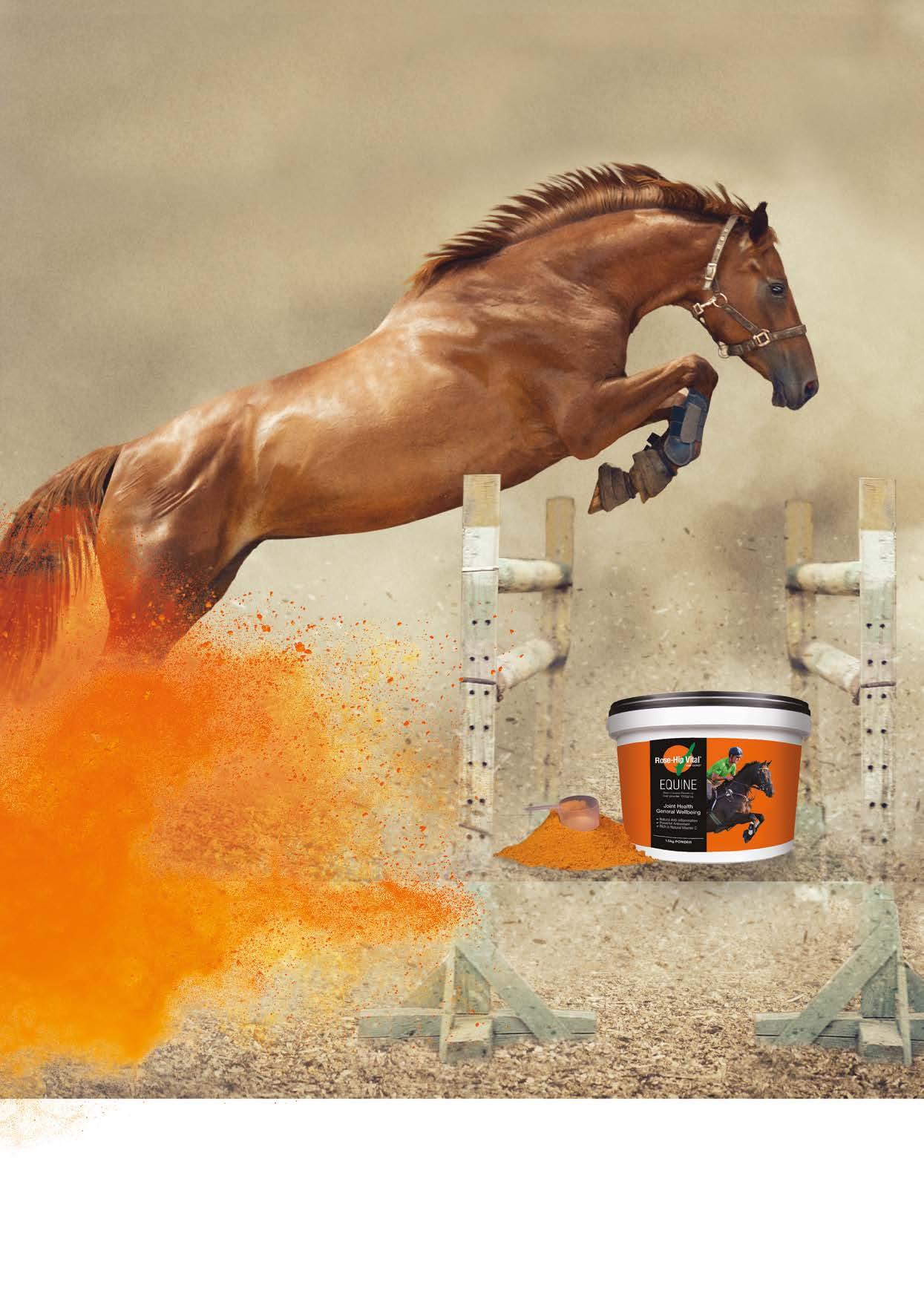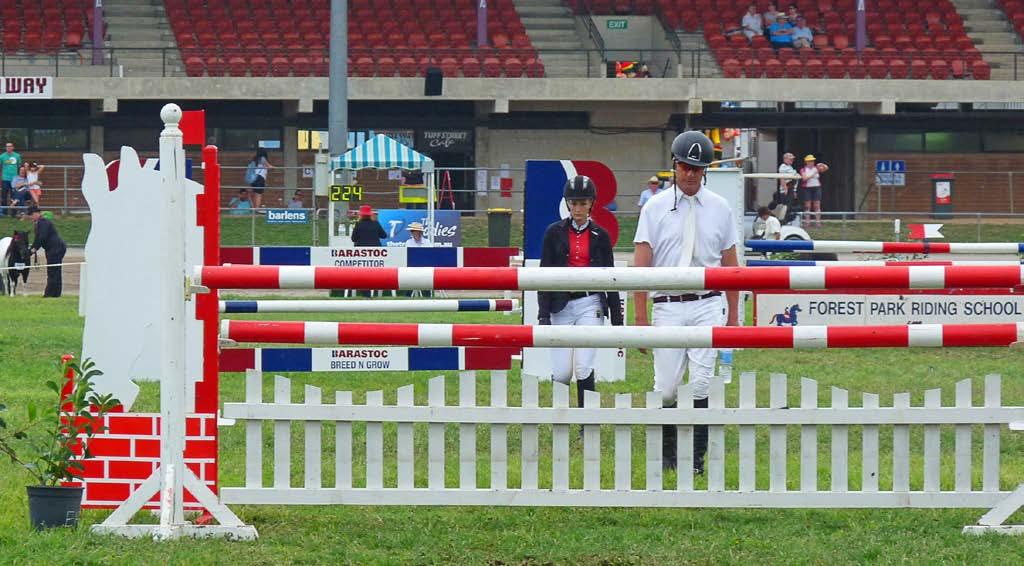
8 minute read
Taking it in Your Stride
Plan your strategy, count your strides (Image by Markus Spiske). RIGHT: Early or late take-offs can generally be avoided if you know the length of your horse’s stride (Image by Melanie Hartshorn).
FEATURE
Advertisement
You’re about to start your show jumping round – but how well prepared are you? JEANNE O’MALLEY shares strategies learned from renowned equestrian coach Trevor Morris that will help you to take it all in your stride.
Of all the people walking the average show jumping course at the average horse show, it’s very possible that only a few of them actually know what they’re doing. For the rest of us, walking the course is just an opportunity to stretch our legs, and to make sure we know where the jumps are, and in what order we should take them. No doubt there’ll be some competitors taking giant leaping strides between combinations and muttering to themselves, but these gymnastics rarely affect their results!
At the Olympics and other top grade competitions, riders are given half an hour to walk the show jumping course, and those riders use every minute of it very wisely. But what do they use it for? Planning their strategy, counting their strides If show jumping is 60 per cent confidence, that confidence comes from knowing what we’re doing, having a plan, and knowing how we’re going to put it into operation. Fear, nerves and loss of balance come from uncertainty and ignorance.

Which brings us to striding. Even when trotting and cantering through baby grids, you’ll have noticed whether your horse’s stride and the jumps have worked together harmoniously or not. If everything’s going to plan, riding down a line of jumps – one right after the other – can feel like bouncing along like a well-dribbled basketball. Alternatively, get the stride wrong and it’s more like a terrifying smash and grab in which you have no idea when the next jump is coming up in relation to your horse’s stride, and even less idea of what to do about it. Determining your horse’s stride But there’s a simple remedy: learn to determine your horse’s stride. In spite of the assertion that an average horse’s stride is 3.66 metres, this measurement can differ from horse to horse. Course designers deal in increments of 3.66m or fractions thereof, but different horses might work in strides of 3.35 metres, 3.05 metres, or even less.
An easy way to identify your horse’s stride involves three observers. It’s a good riding school or Pony Club activity when there are plenty of people around, all just longing to be put to work.
First set up two easy crossbars 21.95 metres apart on a straight line. Now put the horse on a comfortable 20 metre circle, with a jumping rhythm canter and satisfactory impulsion. When you’re both established in the rhythm (and this may take several laps) swing onto the straight line and take the jumps.
Each observer, armed with a cone or similar marker, watches as the horse canters by their position on the straight line, and marks the inside hind footprint. Now measure the distance from the first marker to the second, and from the second to the third.
Repeat this exercise several times, and from both directions. The measurements you take will determine the average length of your horse’s stride (keeping in mind that the figure represents the length of their stride at
The importance of stride is vital to successfully negotiating a two or three fence combination (Image by Mitch Hodge).

this particular stage in their training).
The length of a horse’s stride is not carved in stone, it can change with maturity and training. A young horse often has a long stride of perhaps 3.5 metres, while an older horse may move with a shorter stride of 3.2 metres. If you discover that your horse has a lot of variation in the length of their stride, they need more training on the flat to develop their balance. The same applies if there’s a lack of rhythm and impulsion, a lunging forward or a holding back - it’s back to balance enhancing basics. Developing an eye Assessing and determining stride can be a laborious process. However, some lucky people have a natural aptitude, or in this case ‘eye’, and can
‘see’ stride, with very little preparation or practice. But most of us average people have to develop or learn eye through application and technique. While this may take a long time for some riders, most will learn and become proficient in a matter of months.
If a rider is slow in learning to see stride, that doesn’t necessarily mean that their eye or adjustment of stride will be significantly less accurate than someone who has picked it up quickly. Although anyone who has learned stride is unlikely to have the degree of accuracy of someone with a natural eye. But that doesn’t mean they’ll be an inferior show jumper. Usually it means that the taught rider will compensate by either having or developing strengths in other aspects of the sport.
One of those aspects is attention to detail. Because taught riders can never take eye for granted, we pay a lot of attention to detail when measuring and walking a course. We measure the stride between the elements of a combination jump, and we learn to walk a course not in multiples of meters, but in multiples of our particular horse’s stride. Here’s how we do it While you’re at home in the comfort of your own paddock, here’s what to do: if you know your horse’s stride is 3.35 metres, measure 3.35 metres out on the ground. Now see how many of your strides fit into one of these 3.35 metre lengths. Practice until you can repeatedly stride out one of your horse’s strides accurately. Of course, you may have to make your strides a little longer or shorter than your usual walking pace in order to fit into your horse’s stride length. Try not to deal in half strides because what we want to be thinking is ‘three of mine to one of theirs’ or ‘four of mine to one of theirs’. It just makes it easier.
So, next time we’re walking a jumping course, we stride out our horse’s stride between jumps and count them on our fingers – and remember, we are thinking in terms of strides, not in meters. Start at the first jump and on the landing side, step out 1.83 metres from the upright. That’s where your horse will land. Now begin pacing

ROADS & MARITIME AUTHORISED SAFETY CHECK


CARS • FLOATS / GOOSENECKS • TRUCKS • HORSE TRUCKS TOWING SERVICES • FLOAT / TRUCK REPAIRS AND UPGRADES



When counting strides, don’t focus on the next fence as you walk towards it (Image by Jeanne O’Malley).

out the distance to the next jump.
Let’s say, for example, that it’s three of our strides to one of our horse’s. So, step one, two, three and hold up one finger. Step one, two, three and hold up a second finger. Every third step hold up another finger. Step to within 1.83 metres of the take-off side of the next upright and stop. How many fingers are you holding up? That’s how many of your horse’s strides between the point of landing over the first jump and the point of take-off for the second jump.
Staying grounded When you’re counting strides, don’t focus on the next fence as you walk toward it. Look at the ground, or focus on the far distance like the professionals do. When they stare at their feet or at the horizon, these riders are not lost in thought or working on another astral plane! They know that if they focus on the upcoming fence they will unconsciously accommodate their stride to that distance.
A truly happy realisation when you’re walking a course is that the striding has come up in even, whole strides. However, all too often it turns out to be three and a half or four and a half of our horse’s strides between jumps. This is not a crisis. This is an opportunity! It allows us to plan stride adjustment. And by using our pre-planned form, we develop an instinctive mechanism to adjust stride. In other words, if the stride doesn’t come up even, we can lengthen or shorten our horse’s stride to make sure things even out anyway. This is where all those dressage exercises for lengthening and shortening stride pay off. Bring in the horse’s nose to shorten the stride or let it out to lengthen it, and things slide into place.
But have we measured correctly? Remember when walking a competition course, it’s easy to get excited and take too big a stride. At home we know our horse’s stride and can duplicate it. In competition we might get carried away, so walk the course several times.
Note: If you prefer working in feet rather than metres the math is simple! One metre = 3.28 feet, so multiply the metre measurement by 3.28 to convert to feet.











